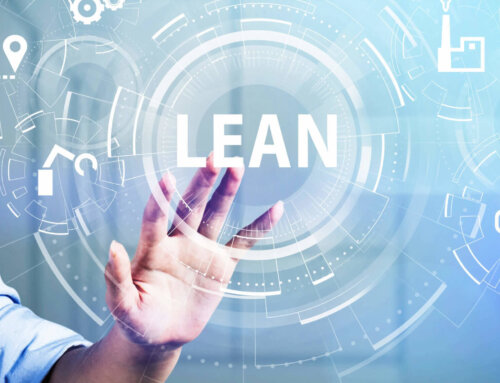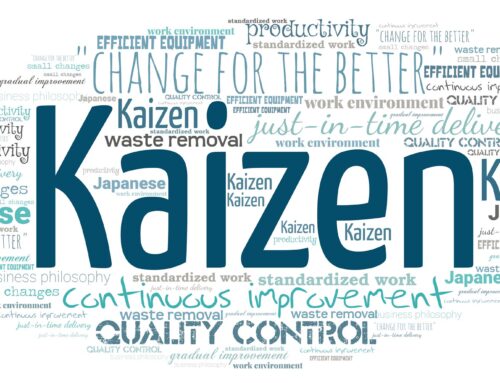By Gene Russell, President & CEO of Manex Consulting
Let’s begin with the origin of Kaizen, which will help put the concept of a Kaizen event in a more easily understandable context. Pronounced “k-eye-zin,” Kaizen originated in Japan. It was adopted as a work philosophy whose success led to many Japanese companies out-pacing their counterparts in other countries in productivity, including the United States.
As a result, U.S. companies – primarily in manufacturing industries – started to embrace and adopt Kaizen principles in the 1980s. Investopedia defines Kaizen as, “A Japanese term meaning change for the better or continuous improvement.” Kai Zen translated: change for good. No conscientious business would argue with that.

So Then, What Is a Kaizen Event?
Kaizen events are relatively short-term, as they can be thought of as meetings of all the right minds in what are basically brainstorming sessions on steroids that address specific problems with a laser focus and maximum speed. These guided, idea-generating sessions typically last one week. Also called Kaizen “blitzes,” focus and speed are of the essence, as oftentimes the events are held to address critical needs that demand immediate solutions.
While Kaizen as a philosophy is one that is methodical, strategic, and long-term – after all, at its core, Kaizen is about continuous, ongoing improvement – Kaizen events are administered with specific, shorter-term process improvement results.
An Example of a Kaizen Event
When client Vintage 99 realized the need to develop a highly focused plan for top-line sales growth in order to meet market demand, Manex Consulting was engaged to facilitate the initiative. Manex Consulting created and guided Kaizen events that were focused on improving factory efficiencies, improving quality, and reducing time-to-market as part of a larger, three-pronged approach.
As our own philosophy about Kaizen events embodies the belief that employee empowerment is one of the most positive outcomes, so event preparation with your management team is essential for successful solutions. Often, the brightest and best ideas generated at Kaizen events come from those most directly involved in the work being done.
The results:
- A reduction in end-of-month closing from 15 to 5 days
- A new on-site Quality Assurance Manager onboarded by Manex using Kaizen events to rapidly scale their knowledge
- A five-year strategic top-line sales plan segmented by product lines and customer segments
What Does It Take to Plan a Successful Kaizen Event?
Leading into a Kaizen event, a key aspect of the preparation means that the team is aware of the issue or problem at hand – the focus of the event. To act on facts instead of the loudest opinion, your team will need some process data. If understood, they should be contemplating at which point in the process the trouble arises.
Identifying the right facilitator for your Kaizen event is crucial. The right facilitator will be one that has a proven track record in leading this highly specialized type of event. When that resource doesn’t exist in-house, a top manufacturing consulting firm like Manex can provide the expertise to seamlessly and successfully fill in the gap.
What’s next?
- Goal-setting: This is true with any successful initiative, and Kaizen is no exception. Once the issue has been identified, goals must be established in a clearly articulated manner that all participants can understand. This also leads to the event being properly scoped (which eliminates waste in and of itself). As well, there should be an alignment on the desired results and success measures. Eliminating some type of identified waste leading to process improvement will be an inherent goal of any Kaizen event.
- Select the Right Participants: Kaizen event teams typically include six-ten strategically selected individuals. Subject matter experts who are most intimately involved in the processes being addressed, as well as relevant management teams throughout the organization, should be part of the team; however, it is important to keep the number of management employees to a minimum. No less than half the team should consist of the employees who are actually doing the work being evaluated (and ultimately improved upon). It is imperative that participants feel empowered, engaged, and motivated to share and collectively generate ideas throughout the event that have the most likelihood of success in resolving the issue (or issues) the Kaizen event has been created to address. Ideally, someone who can represent an outside perspective will be included on the team, as well. This is yet another value-added benefit that a manufacturing consultant like Manex can provide.
- Reduce Waste: The worst waste is making something efficient, when it should not exist at all. At Manex Consulting, we believe the most important aid in addressing and solving a problem is to lean (pun intended) heavily on another Japanese production system concept, reducing the 8 wastes.
- Defects
- Overproduction
- Waiting
- Non-Utilized Resources
- Transportation
- Inventory
- Motion
- Excess Processing
- Standardize New Process: Incorporating the team’s changes into your everyday way of working is the toughest assignment of all. How do you move from knowing the right things to everyone doing the right things, and not reverting to prior behaviors when things are challenging? Manex’s ultimate desired outcome is your team owning the changes to behaviors that improve results.
What Is a Typical Kaizen Event Schedule?
The duration of a Kaizen event is usually three to five days, depending on the complexity of the issue or problem at hand. A five-day Kaizen event might look like the following:
- Day 1: What happens on day 1 is essentially what has been described in the goal setting preparation process above. The assembled team aligns on goals and KPIs, identifies waste, and maps the current state.
- Day 2: The team takes a deep dive into the root cause (or causes) of the problem and generates ideas for improvement that can lead to a successful resolution, as well as necessary resources to allow the resolution to happen.
- Days 3 & 4: The implementation of identified options for improvement are simulated and then tested, measured, refined based on test results, and so on (continuous improvement in action). Once the team is confident about the path to move forward, new processes and procedures are standardized and thoroughly documented.
- Day 5: Training is conducted for the new processes and procedures, which are communicated clearly throughout the organization. The final day is also the ideal time to recognize and reward those who have participated in the Kaizen event and who have been instrumental in generating ideas that should lead to successful outcomes.
What Are the Five Types of Kaizen Events?
- Point Kaizen Events: You can look at this type of Kaizen event as essentially point and shoot. An easily fixable flaw in a process is surfaced, after which point a remedy is quickly formulated and implemented.
- Business Process Kaizen Events: (aka System Kaizen Event) A Business Process Kaizen event is a result of issues or problems with a business process or system. More strategic planning is involved, usually with multiple Kaizen events required over a longer period of time.
- Line Kaizen Events: A good way to think of this type of event is to envision the improvements being made up the line, if you will. This happens when more than one department is a beneficiary of process improvements, but the implementation of the improvements in one department must happen prior to those in the other department/s (there are dependencies, in other words).
- Plane Kaizen Events: Although Plane Kaizen events are similar to Line Kaizen Events, they are more cross-functional. Using a Lean Manufacturing principle of mapping a value stream, various product lines are recipients of successful improvement processes being made in others.
- Cube Kaizen Events: Connecting the interrelated dots is one way of looking at Cube Kaizen Events. Process improvements are made company-wide and even externally, impacting both customers and vendors. The results impact the entire organization and beyond.
When Should You Hold a Kaizen Event?
Given that Kaizen stands for continuous improvement and change for the better, the short answer is any time that a serious problem occurs or is likely to occur. A substantial benefit of Kaizen events is that they allow an organization to address the root cause of a problem before it becomes a bigger problem – or more widespread. This fosters an environment in which continuous improvement is a table stakes.
Any point at which you have an issue that is serious enough to risk your business running optimally is reason enough for a Kaizen Event.
Who Should Really Be Facilitating a Kaizen Event?
Kaizen events in their various forms offer an exceptional way in which to address both minor and major issues with manufacturing operations. Still, many organizations do not fully grasp what they really are and/or do not have internal resources with the experience to plan and facilitate them to achieve desired outcomes. At Manex Consulting, we do, and we can expand your organization’s bandwidth accordingly.
Need help with Kaizen Events and implementing Kaizen as an ongoing business philosophy in your organization? Contact Manex at 925-807-5100, or send an email to info@manexconsulting.com.
Manex’s expert team of Kaizen event and Kaizen consultants for manufacturers is the most hired in Northern California. In fact, Kaizen is among Manex’s top areas of expertise. We bring to your team specific skills in analysis, and advise you on small or major adjustments to streamline your manufacturing processes. We work closely with your management team to teach them how to increase your return on investment (ROI) while also training them in effective Kaizen methods. At the end of the day, our goal is to efficiently achieve cost efficiencies and increased profits for your manufacturing business.
About the Author
As Manex President and CEO, Gene Russell is a driving force behind the firm’s successful track record in helping California manufacturing companies grow and thrive. He has held three successful CEO positions over a 20-year period for businesses that included early-stage, private equity, and non-profit. He has served as senior leadership for global Fortune 100 and iconic consumer-branded companies. Prior to Manex, Russell led a turnaround at a California midsized manufacturer. His experience in global sourcing and manufacturing over several decades led him to Manex where he brings real-world experiences, and as a result, a personal passion to restore and invigorate domestic USA-based manufacturing. He can be reached at grussell@manexconsulting.com.


